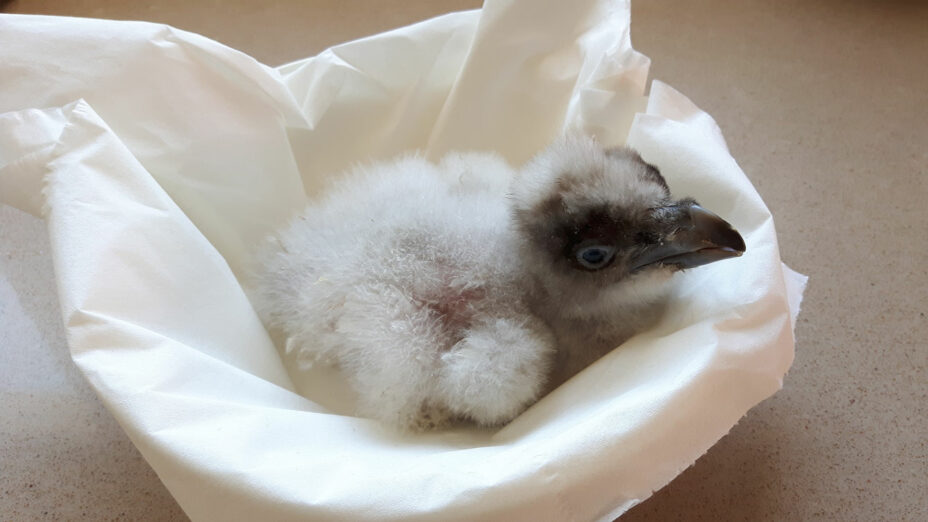While most of you are eating – or looking for – Easter eggs, our very valuable Corsican bearded vulture egg has hatched successfully!
Late in February, a team from the Parc Naturel Regional de Corse and from the VCF extracted an egg from a bearded vulture pair in Corsica that had not bred successfully for more than 10 years – an action that had been agreed by all relevant stakeholders under an emergency action plan to save this declining and extremely small island population from going extinct.
The egg was relatively small, and showed an unusually big air sack – so far never observed in other bearded vulture eggs, but turned out to be fertile. It was incubated artificially following the protocol developed by the VCF for the captive breeding network, and that includes giving the egg a thermal shock 4 times per day – exposing it during 5 minutes to outside temperatures, which promotes the development of the embryo.
The chick initiated the hatching process on the 12th March, with the displacement of the egg cell, and finally managed to break the egg shell 6 days later (on the 18th March). It weighed 116g. The chick is currently developing well and will be transferred next week to a foster breeding pair from the bearded vulture specialized captive breeding center in Guadalentín, managed by the Andalusia regional Government. Only natural reared birds are able to adapt to nature and breed in the wild without behavioral alterations, so we avoid any hand rearing after the first few days.
This is the first time ever an egg from the bearded vulture population in Corsica is incubated artificially, and the first ever chick from the island to hatch in captivity.
This chick will be included in the bearded vulture captive breeding network, in order to create a Corsican genetic reserve. In turn, two young birds from the captive breeding network will be released later this year in Corsica to boost the extremely small population.
During the last 25 years the bearded vulture population has been declining in Corsica, with the decline most evident in the last few years – from 10 pairs 10 years ago to the current 4 or 5. The number of fledglings has also been very poor – between 0 to 2 fledglings per year.
The emergency action plan to save the species is partly funded by the Fondation Prince Albert II de Monaco and the Barcelona Zoo Fundació.
Photos: VCF





